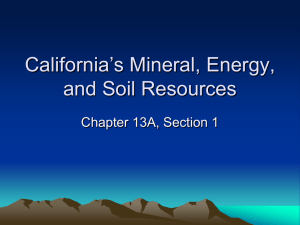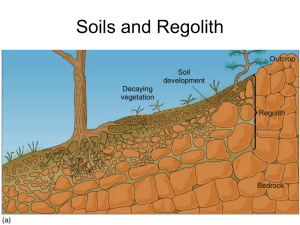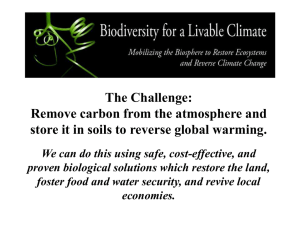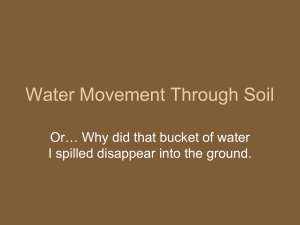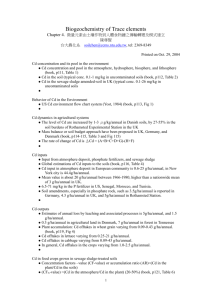three dimensional numerical simulation of residential
advertisement
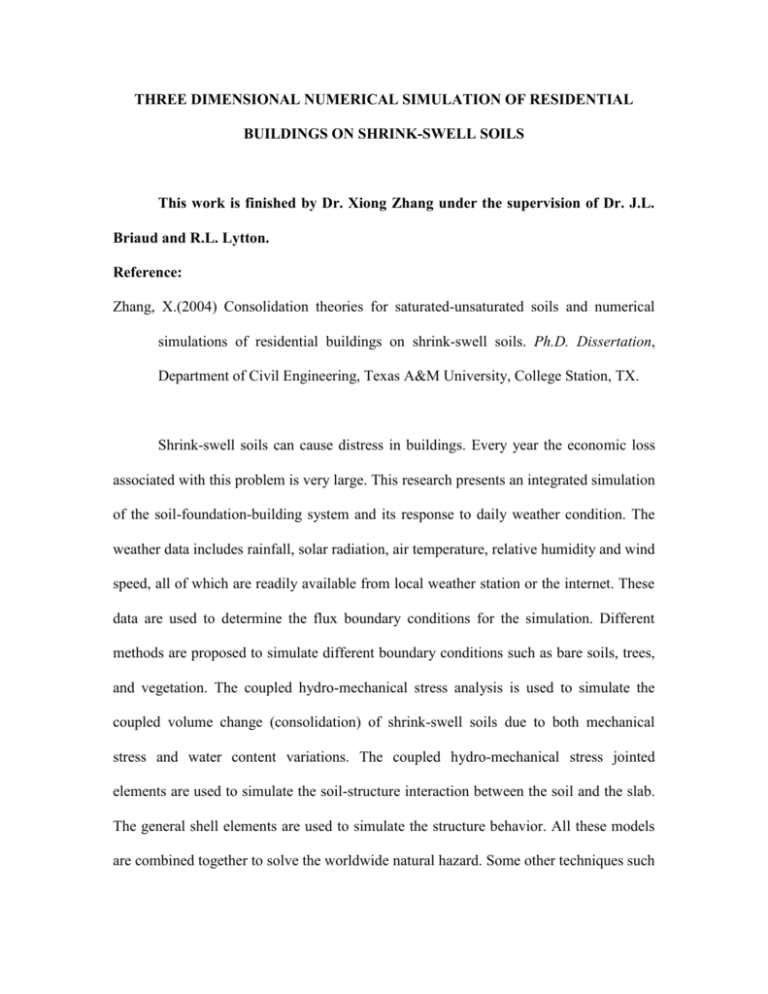
THREE DIMENSIONAL NUMERICAL SIMULATION OF RESIDENTIAL BUILDINGS ON SHRINK-SWELL SOILS This work is finished by Dr. Xiong Zhang under the supervision of Dr. J.L. Briaud and R.L. Lytton. Reference: Zhang, X.(2004) Consolidation theories for saturated-unsaturated soils and numerical simulations of residential buildings on shrink-swell soils. Ph.D. Dissertation, Department of Civil Engineering, Texas A&M University, College Station, TX. Shrink-swell soils can cause distress in buildings. Every year the economic loss associated with this problem is very large. This research presents an integrated simulation of the soil-foundation-building system and its response to daily weather condition. The weather data includes rainfall, solar radiation, air temperature, relative humidity and wind speed, all of which are readily available from local weather station or the internet. These data are used to determine the flux boundary conditions for the simulation. Different methods are proposed to simulate different boundary conditions such as bare soils, trees, and vegetation. The coupled hydro-mechanical stress analysis is used to simulate the coupled volume change (consolidation) of shrink-swell soils due to both mechanical stress and water content variations. The coupled hydro-mechanical stress jointed elements are used to simulate the soil-structure interaction between the soil and the slab. The general shell elements are used to simulate the structure behavior. All these models are combined together to solve the worldwide natural hazard. Some other techniques such as the pseudo moisture variation simulation and the thermodynamic analogue are used to make the simulation applicable. Theory regarding the proposed system is described first. Two examples to illustrate the application of the proposed system are then presented. Evaluation of Evapotranspiration Two primary reasons make it extremely difficult to simulate the evaporation process at the interface between the ground surface and the atmosphere: (1). Too many influencing factors must be included in the process. The mechanical stress, pore water pressure, pore air pressure, temperature and salt concentration must be used as stress state variables which require five or more constitutive relations. More than 30 material parameters are needed to handle the fully coupled problem. For example, the soil deformation is influenced by the mechanical stress, pore water pressure, pore air pressure, water vapor, and salt concentration. Similar considerations are needed for the water, water vapor, air, heat and salt phases in the soils and many other phenomena such as conduction, convection, radiation must be included. (2). the boundary conditions at the soil-atmosphere interface are extremely difficult to determine. By contrast, the soil at a certain depth is mainly influenced by the mechanical stress and moisture (pore water pressure) variation whereas the other factors such as temperature, salt concentration and pore air pressure usually remain constant and their influences are negligible. Consequently, if the evapotranspiration process at the soilatmosphere interface can be determined, the soil behavior can be simulated by a coupled hydro-mechanical stress analysis. The FAO 56 Penman –Montieth method is “well established as the most accurate and robust method to estimate the reference ET, and the past decade of research has solidified its status as the international standard (Allen et al. 1998).” The following information is required: location of the site, elevation, daily or hourly weather data including solar radiation, relative humidity, air temperature and wind speed. This information can be readily obtained from local weather stations or from the internet. Figs.1a through 1d show mean daily air temperature, relative humidity, wind speed, and rainfall over a two year period between August 1, 1999 and October 2001 at a Date (a) 10/01/01 08/01/01 06/01/01 04/01/01 02/01/01 12/01/00 10/01/00 08/01/00 06/01/00 04/01/00 02/01/00 12/01/99 10/01/99 100 90 80 70 60 50 40 30 20 10 0 08/01/99 Mean Daily Temperature (oF) site at Arlington, Texas, respectively. Date (c) 02/01/01 04/01/01 06/01/01 08/01/01 10/01/01 02/01/01 04/01/01 06/01/01 08/01/01 10/01/01 08/01/00 06/01/00 04/01/00 02/01/00 12/01/99 10/01/99 08/01/99 Mean Daily Relative Humidity (%) 12/01/00 10 9 8 7 6 5 4 3 2 1 0 12/01/00 (b) 10/01/00 Date 10/01/00 08/01/00 06/01/00 04/01/00 02/01/00 12/01/99 10/01/99 08/01/99 Mean Daily Wind Speed (mm/s) 120 100 80 60 40 20 0 110 Rainfall and ET0 (mm/day) 90 70 Rainfall 50 30 10 -10 ET0 04/01/02 02/01/02 12/01/01 10/01/01 08/01/01 06/01/01 04/01/01 02/01/01 12/01/00 10/01/00 08/01/00 06/01/00 04/01/00 02/01/00 12/01/99 10/01/99 08/01/99 -30 (d) Fig.1. Daily Weather Data Over Two Years At Arlington, TX. (a.) Mean Daily Temperature; (b.) Mean Daily Relative Humidity. (c.) Mean Daily Wind Speed The soil stratigraphy, the average soil properties and the parameters for each soil layers at the site are shown on Fig.2. There are two soil layers, which are the dark gray silty clay from 0-1.80m and the brown silty clay for the depth greater tan 1.8m. Four footings called RF1, RF2, W1, and W2 were constructed at the site. A benchmark was installed to a depth of 10m following the standard procedure for Class A Rod Marks. The water level in the 7m deep standpipes varied between 4m and 4.8m below the ground surface over a period of 2 years. The soil outside of the footings is covered by Johnsongrass (Sorghum halepense), which is the most widely distributed naturalized warm-season, perennial grass in North America. Starting on August 11, 1999, the vertical movement of the footings with respect to the benchmark was recorded every month with a digital level until November 2001. Fig.2. Soil Stratigraphy at the Site Ho et al. (1992) proposed a method to construct the constitutive surfaces. A similar method has been proposed by Fredlund and Rahardjo (1993). These methods require a converged void ratio at the nominal origin of the constitutive surfaces. The constitutive surfaces obtained have constant material properties in some regions and are usually discontinuous. Sometimes these methods are not applicable. Zhang (2004) modified the above methods and overcame the drawbacks by using the same assumptions as Ho. et al (1992) and Fredlund and Rahardjo (1993). Continuous constitutive surfaces can be obtained. The minimum laboratory tests needed for constructing the constitutive surfaces of unsaturated soils are: the swell test-consolidation test, the suction test (pressure plate test and salt concentration test), the free shrink test and the specific gravity test. (a)Void Ratio (b) water Content Fig.3. Void Ratio and Water Content Constitutive Surfaces of a Soil at Arlington, Texas. The proposed method was used to simulate the movement of the four footings and the simulation results are shown in Fig.4 A simulation is performed for every day of the two year period. The displacements at the four corners of the concrete footing were averaged and compared with the measurements at the site. As can be seen in Fig.4, in the first year from 08/01/1999 to7/11/2000, both the measured and predicted movements are relatively small. The explanation can be found in Fig.1d. It is found that in the first year, the rainfall and the potential evapotranspiration are evenly distributed. This lack of fluctuation leads to very small movements of the four footings. There are dramatic settlements of the four footings from 7/11/2000 to 10/14/2000 in the second year, followed by dramatic heaves from 10/14/2000 to 05/12/2001. After that the footings move back to their original positions. This can be explained by a long dry summer from 06/19/2000 to 10/13/2000 with no rainfall, followed by a rainy winter and spring from 0/13/2000 to 06/30/2001 (Fig.1d) followed by relatively mild rainfall and evapotranspiration. The simulation results matched the observations reasonably well in both tendency and magnitude, reflecting that the proposed method is good enough for practical applications. 10 0 -10 -20 -30 -40 RF1 Movements RF2 Movements W1 Movements -50 -60 -70 -80 W2 Movements 07/21/01 05/22/01 03/23/01 01/22/01 11/23/00 09/24/00 07/26/00 05/27/00 03/28/00 01/28/00 11/29/99 09/30/99 Predicted movements 08/01/99 Movements (mm) 40 30 20 Fig. 4. Comparisons between the Observation and Simulation Results SIMULATION OF RESIDENTIAL BUILDINGS ON SHRINK-SWELL SOILS It is extremely difficult to perform an uncoupled analysis for unsaturated soils. Moreover, when a structure is constructed on the saturated soils, the magnitude and distribution of the contact pressure between the soil and the foundation depends on the volume change of the soils and are usually unknown. Variations in the mechanical stress in the soil due to the applied contact pressure are much more complicated. Consequently, it is nearly impossible to estimate the excess pore water pressure and use the uncoupled consolidation theory to analyze the soil behavior accurately, still not to say to correctly simulate the soil-structure interaction. To simulate the soil behavior and the soil-structure interaction realistically, a fully coupled consolidation theory must be used to simulate the volume change of the soils. A complete system is proposed to simulate the behavior of residential buildings on shrink-swell soils, which overcomes many shortcomings in the existing research. Daily weather data such as air temperature, solar radiation, relative humidity, wind speed and rainfall, which are readily available from local weather station or internet, are used to determine the boundary conditions for bare soils, vegetations and trees in combination with the FAO 56 PM method, which is a well established method in the agriculture engineering. The fully coupled hydro-mechanical stress analysis is used to simulate the volume change for shrink-swell soils. The coupled hydro-mechanical stress jointed elements are used to simulate the soil-structure interaction at the soil-slab interface, and the general shell elements are used to simulate the behavior of slabs and walls. Some special techniques such as the thermodynamic analogue and the pseudo moisture variation simulation are used to implement the proposed system. All the models and techniques are integrated in a single system to simulate the influence of the weather on the soil, foundation and superstructure, which makes a more realistic simulation possible. Fig.5 shows a virtual residential building used in a simulation. Fig.6 shows the plane view of the simulated domain. Figs.7 through 13 show some of the simulation results. Figure 5. Residence Used in the Simulation (Note: The roof is not included in this simulation to show the stress in the slab) Figure 6. Floor Plan of the Residence Figure 7. Deformations of the Ground Soils and the Building Figure 8. Matric Suction Distribution in the Ground Soils Figure 9. Separation between the Slab and the Ground Soils Figure 10. Von Mises Stresses in the Structure Figure 11. Shear Force between the Slab and the Ground Soils along X Direction Figure 12. Relative Slip between the Slab and the Ground Soils along X Direction Figure 13. Maximum & Minimum Moments in the Slab Over Two Years




